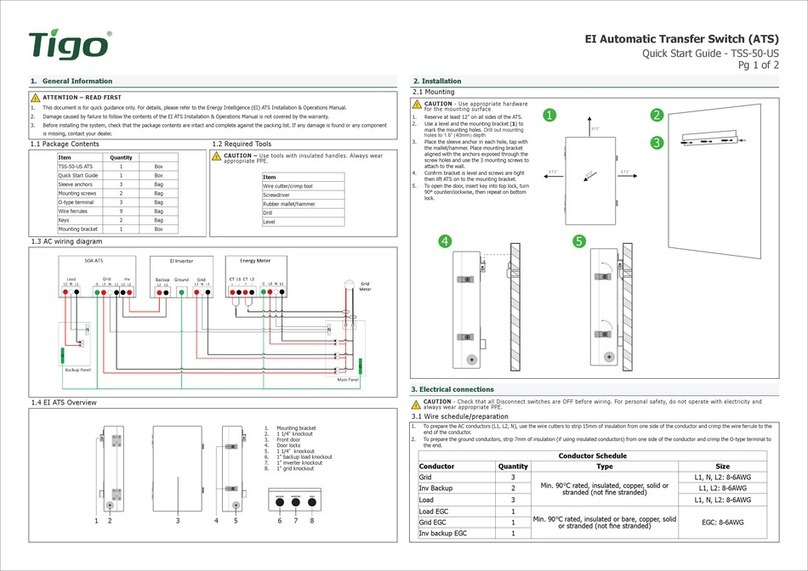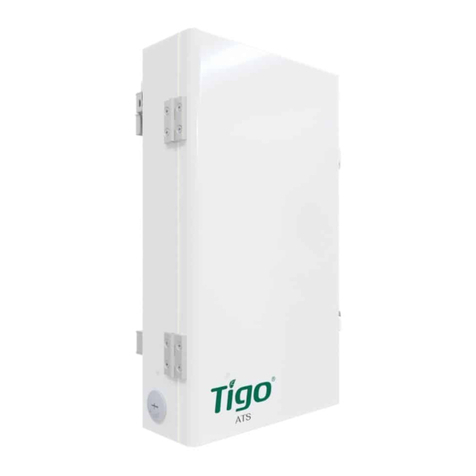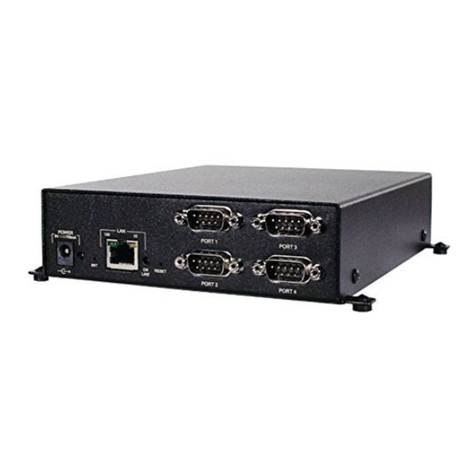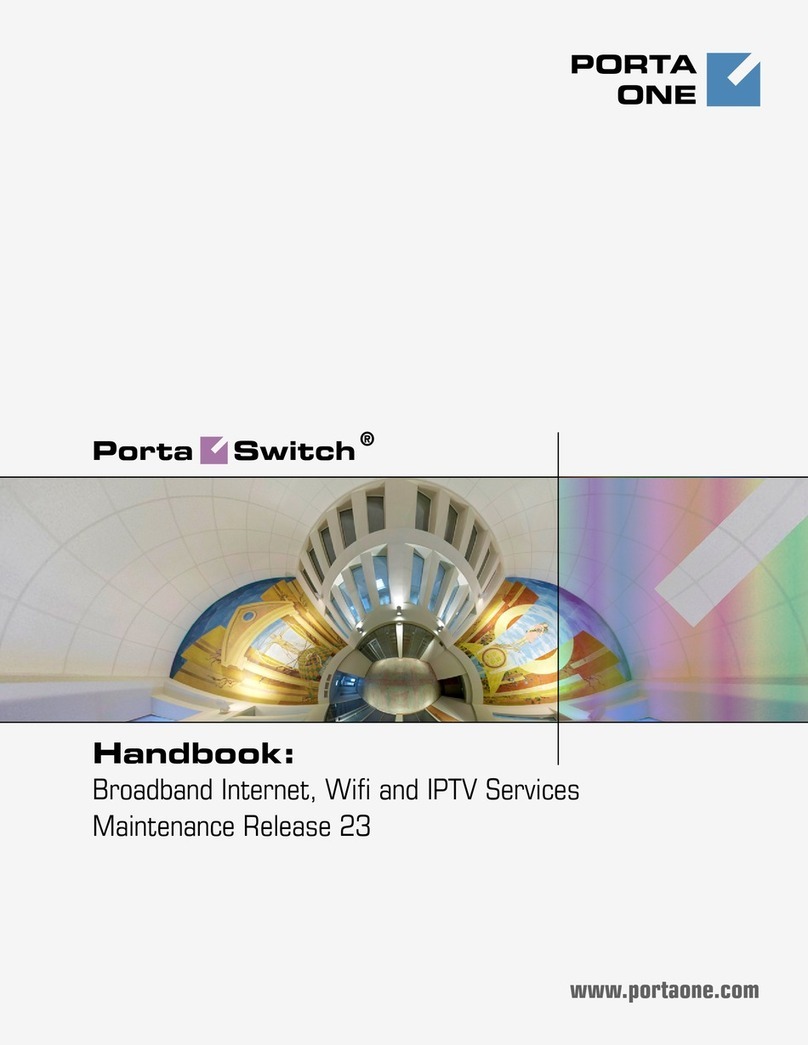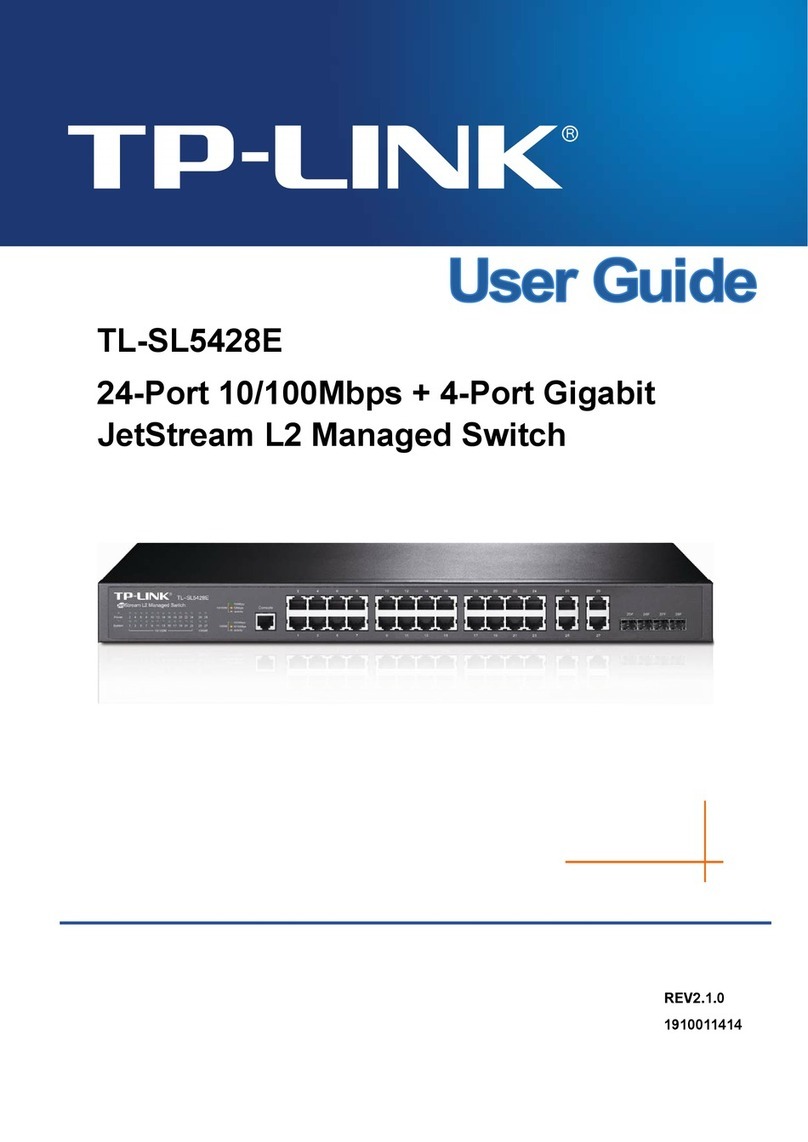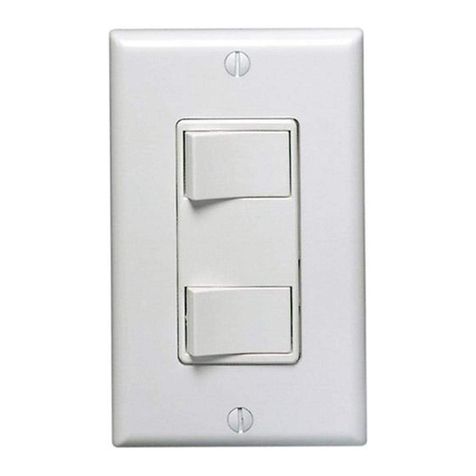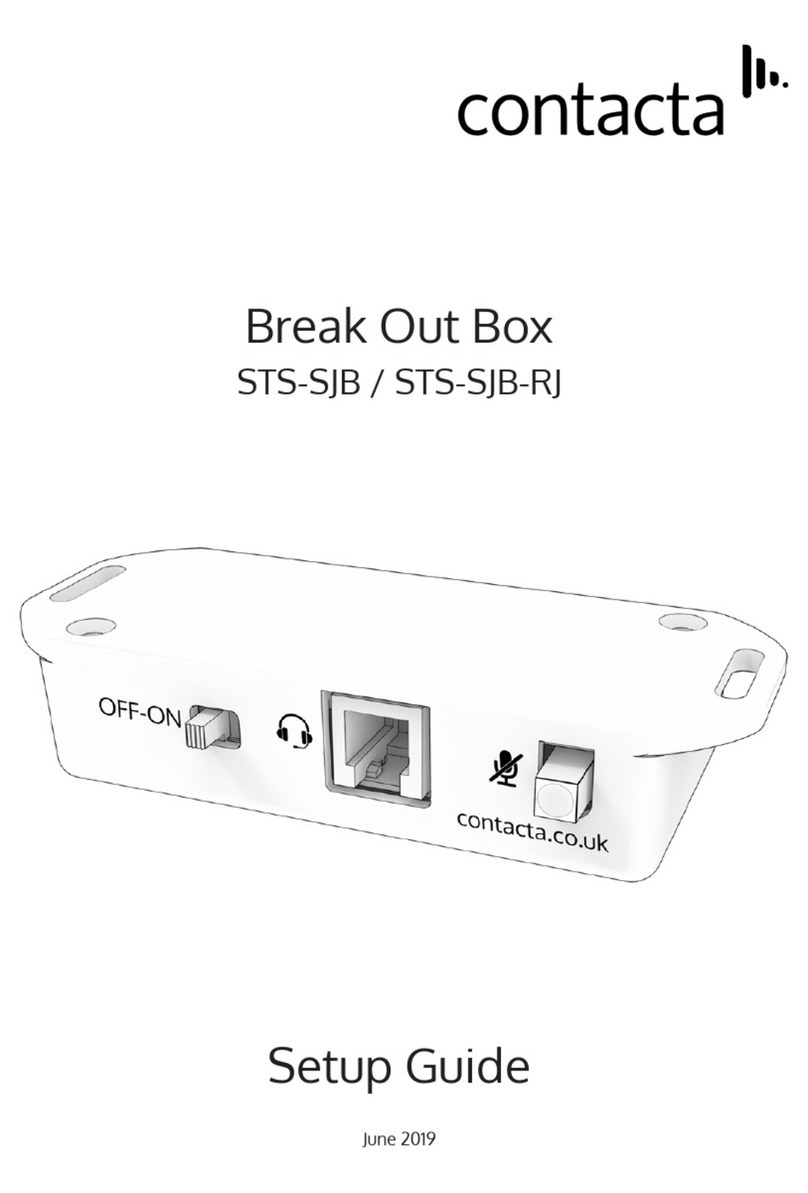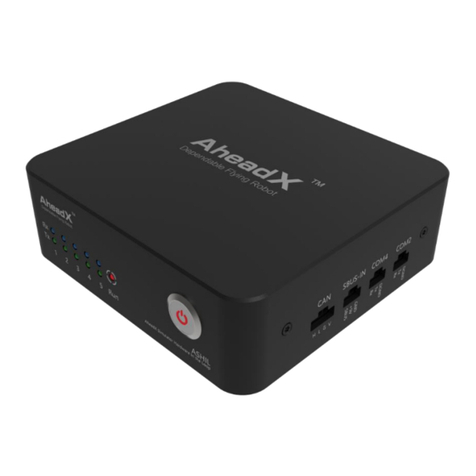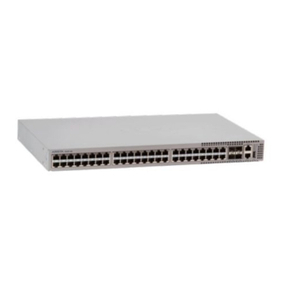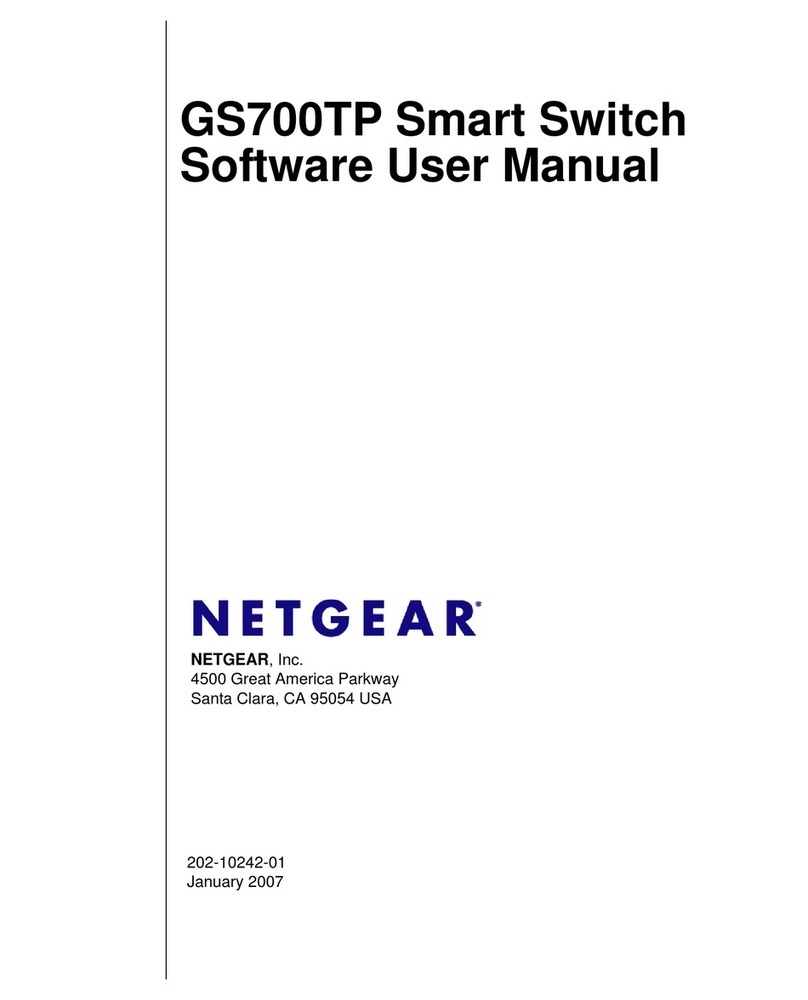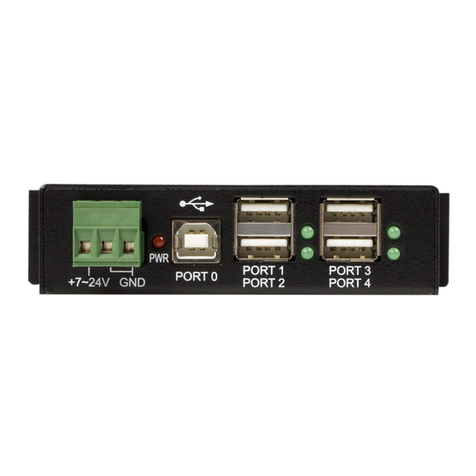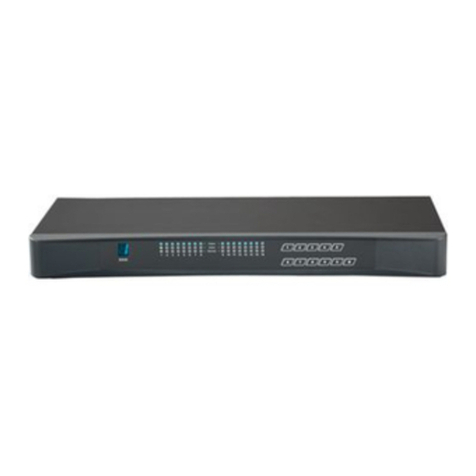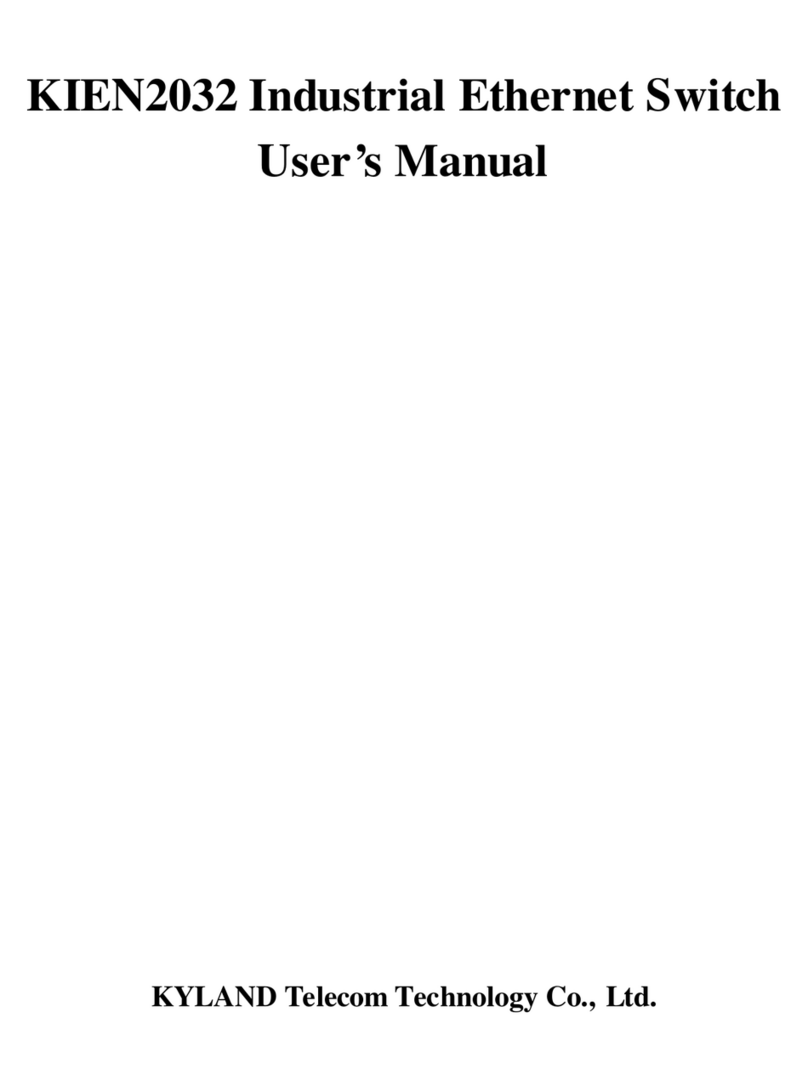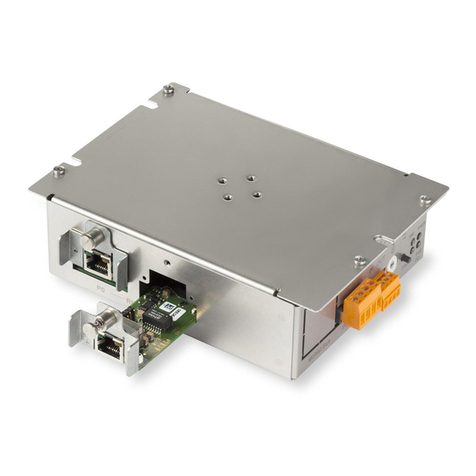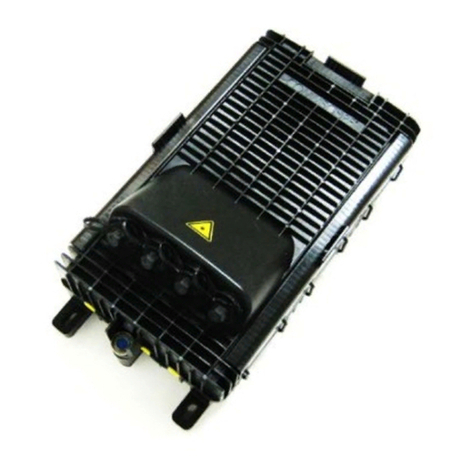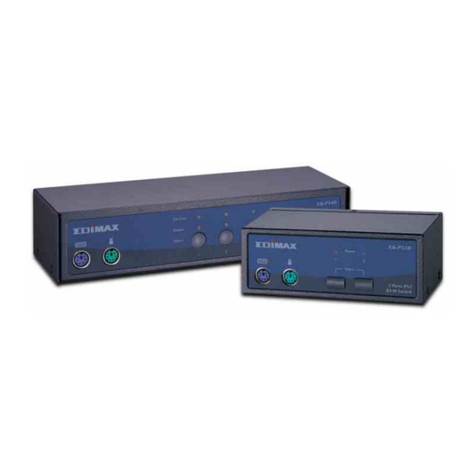Tigo TSS-50-US User manual

1 | Page
Tigo Energy, Inc. | www.tigoenergy.com | support@tigoenergy.com
Tigo Energy Intelligence
Automatic Transfer Switch Installation and
Operation Manual
002-00088-00 | 10/22/2021

2 | Page
Tigo Energy, Inc. | www.tigoenergy.com | support@tigoenergy.com
Disclaimer
DISCLAIMER OF WARRANTIES AND LIMITATION OF LIABILITY
The information, recommendations, descriptions, and safety disclosures in this document are
based on Tigo Energy, Inc.’s (“Tigo”) experience and judgment and may not cover all
contingencies. If further information is required, a Tigo sales office should be consulted. Sale of
the product shown in this document is subject to the terms and conditions outlined in the Tigo
warranty or other contractual agreement between Tigo and the purchaser.
THERE ARE NO UNDERSTANDINGS, AGREEMENTS, WARRANTIES, EXPRESSED OR IMPLIED,
INCLUDING WARRANTIES OF FITNESS FOR A PARTICULAR PURPOSE OR MERCHANTABILITY,
OTHER THAN THOSE SPECIFICALLY SET OUT IN ANY EXISTING CONTRACT BETWEEN THE
PARTIES. ANY SUCH CONTRACT STATES THE ENTIRE OBLIGATION OF TIGO. THE CONTENTS
OF THIS DOCUMENT SHALL NOT BECOME PART OF, OR MODIFY ANY CONTRACT BETWEEN,
THE PARTIES.
In no event will Tigo be responsible to the purchaser or user in contract, in tort (including
negligence), strict liability or otherwise for any special, indirect, incidental or consequential
damage or loss whatsoever, including but not limited to injury to persons, damage or loss of
use of property, equipment or power systems, cost of capital, loss of power, additional
expenses in the use of existing power facilities, or claims against the purchaser or user by its
customers resulting from the use of the information, recommendations and descriptions
contained herein. The information contained in this document is subject to change without
notice.

3 | Page
Tigo Energy, Inc. | www.tigoenergy.com | support@tigoenergy.com
Contents
Disclaimer...................................................................................................................................................... 2
Contents ........................................................................................................................................................ 3
Safety Symbols .............................................................................................................................................. 5
Safety Information ........................................................................................................................................ 6
EI Residential Solution Overview .................................................................................................................. 7
The Energy Intelligence Residential Solution ............................................................................................ 7
Transportation and Storage ...................................................................................................................... 8
Understanding this Document .................................................................................................................. 8
Pre-Installation .............................................................................................................................................. 8
EI ATS Package Contents ........................................................................................................................... 8
Tools & Items Needed for Installation ...................................................................................................... 9
EI ATS Overview ........................................................................................................................................ 9
EI ATS Labels ........................................................................................................................................... 10
EI ATS Weight and Dimensions ............................................................................................................... 11
Installation .................................................................................................................................................. 12
Installation requirements ....................................................................................................................... 12
Mounting the EI ATS ............................................................................................................................... 13
Wiring the ATS ............................................................................................................................................ 14
Wire schedule and preparation .............................................................................................................. 14
Inverter connections ............................................................................................................................... 15
Grid connections ..................................................................................................................................... 16
Output connections ................................................................................................................................ 17
Commissioning ............................................................................................................................................ 18
Pre-power Check ..................................................................................................................................... 18
Torque Table ........................................................................................................................................... 18
Powering on the EI Solution .................................................................................................................... 19
After Installation ......................................................................................................................................... 19
Cleaning and Care ................................................................................................................................... 19
Maintenance ........................................................................................................................................... 19

4 | Page
Tigo Energy, Inc. | www.tigoenergy.com | support@tigoenergy.com
Troubleshooting ...................................................................................................................................... 20
Your Tigo Customer Support contact ...................................................................................................... 20
Decommissioning ........................................................................................................................................ 22
Packing the ATS ....................................................................................................................................... 22
Storing the EI ATS .................................................................................................................................... 22
Disposing of the ATS ............................................................................................................................... 22
Warranty ..................................................................................................................................................... 22
Specifications .............................................................................................................................................. 23

5 | Page
Tigo Energy, Inc. | www.tigoenergy.com | support@tigoenergy.com
Safety Symbols
The following safety symbols are used in this Installation and Operations manual. Please review
these symbols and their meanings before installing or operating the system.
Symbol
Explanation
WARNING indicates a hazardous situation which, if not avoided, could
result in serious injury or loss of life.
AVERTISSEMENT indique une situation dangereuse qui, si elle n'est
pas évitée, pourrait entraîner la mort ou des blessures graves.
CAUTION indicates a hazardous situation which, if not avoided, could
result in minor or moderate injury and damage of the product.
ATTENTION indique une situation dangereuse qui, si elle n'est pas
évitée, pourrait entraîner des blessures mineures ou modérées.
NOTE is used to address additional information about the section’s
subject matter.
AVIS est utilisé pour traiter des pratiques non liées aux blessures
corporelles.
On the ATS enclosure:
Symbol
Explanation
Risk of electrical shock
Risque d'électrocution
Risk of burn injuries
Risque de brûlures
Observe the operating instructions
Respectez les instructions de service

6 | Page
Tigo Energy, Inc. | www.tigoenergy.com | support@tigoenergy.com
Safety Information
Save these instructions.
Warning!
Read all instructions in this manual to reduce risk of injury, damage, and loss
of life.
The equipment detailed in this document are to be installed and maintained by
qualified personnel only.
This product could expose the user to chemicals known to the State of
California to cause cancer. For more information refer to
www.P65Warnings.ca.gov.
Caution!
This product must operate within the technical specifications of the datasheet.
Damage caused by failure to follow the contents of the EI ATS Installation &
Operation Manual is not covered by the warranty.
Note
The ATS is NEMA 4X rated. Unused conduit openings must be properly sealed
and all connecting conduit requires the use of appropriate fittings for the
application.
Use only copper conductors, solid or stranded. Never use fine stranded
conductors. All conductors must have a minimum temperature rating of 75°C.

7 | Page
Tigo Energy, Inc. | www.tigoenergy.com | support@tigoenergy.com
EI Residential Solution Overview
The Tigo Energy Intelligence (EI) Automatic Transfer Switch (ATS) is a self-acting switch which
acts to safely isolate the utility conductors and switch to the backup power source during a grid
outage. The ATS is a vital component in any grid-tied, storage backup system and a required
component of the EI Residential Solution when the EI Battery is included.
The Energy Intelligence Residential Solution
The EI Residential Solution includes the following components:
1. EI Inverter – The TSI-7.6K-US and TSI-11.4K-US inverters may be installed as grid-
tied only or as an energy storage system when paired with the EI Battery. The inverter
converts the PV array’s DC energy to AC for use in the building and when paired with an
EI Battery, acts as the battery management unit.
2. TS4 – Tigo’s MLPE, the TS4-A-F provides module-level rapid shutdown. The TS4-A-O
provides module-level monitoring, rapid shutdown, and best-in-class module-level
optimization with Tigo’s patented Predictive IV.
3. EI Battery (optional) – The LFP battery is designed for use specifically with the EI
Inverter. Up to four battery enclosures may be installed with the EI Inverters.
4. EI ATS (optional / required when batteries are used) – The EI ATS is an automatic
transfer switch which switches the home loads from grid + Solar/battery usage to
solar/battery usage only when the grid goes down. This is a required component to any
energy storage system when connected to the utility grid as it prevents the potential for
dangerous backfeed on the utility’s conductors.
5. Energy Meter – (optional / required when batteries are used) – The energy meter
monitors the import and export of energy into the home’s electrical system. This allows
the inverter to determine when and how much energy is required from the battery to
serve connected loads.
6. Energy Intelligence – Accessible through the web or mobile app, the EI Platform
provides visibility into system and module performance. The EI mobile app is also used
for commissioning the EI Residential Solution.
Figure 1 EI System Diagram
2
1
3
4
5
6

8 | Page
Tigo Energy, Inc. | www.tigoenergy.com | support@tigoenergy.com
Transportation and Storage
When possible, transport the ATS in the original packaging, facing up and do not expose to
inclement weather or unnecessary shocks and vibrations. If the original packaging cannot be
used, a box of similar size, without damage, and can accommodate the weight of the ATS. Take
precaution to ensure the packaging is fully closed and reasonably weather tight.
To store the ATS, select a dry environment with ambient temperatures of -13°F to 122°F (-25°C
– 50°C).
Understanding this Document
This manual includes installation references to three separate components of the complete
Energy Intelligence Residential Solution: inverter, battery, and ATS. Each of these components
(and more) are necessary for the proper operation of the EI Battery system.
Installation of the equipment can take place concurrently, although the EI Inverter is the hub of
all equipment in this system. Where a workstream can split off from the main efforts of ATS
installation, a QR code will be provided directing to the appropriate product’s documentation.
Pre-Installation
When receiving delivery of the EI ATS, examine the packaging for damage. If the packaging
appears to have damage through the box and into the contents, refuse delivery and notify the
vendor immediately. If damage appears external only, open the box and inspect for any product
damage and/or missing parts.
EI ATS Package Contents
Open the package and inspect the contents. The following components should be included. If
anything is missing, please contact the vendor immediately.
Figure 2 Package contents
Installation
A B C D
E F G
H
Table 1 Package list
Item
Description
Quantity
A
ATS
1
B
Quick Stary Guide
1
C
Sleeve anchor
3
D
Keys
2
E
Safety-lock screws
2
F
O-type terminal
3
G
Wire ferrules
8
H
Mounting bracket
1

9 | Page
Tigo Energy, Inc. | www.tigoenergy.com | support@tigoenergy.com
Tools & Items Needed for Installation
Table 2 Required Tools
Item
Needed for:
3/16” (5mm) Philips screwdriver
Removing/replacing covers, terminating conductors
Pencil
Marking drill holes
Level
Mounting the equipment
Drill & 8mm drill bit*
Drilling pilot holes for mounting. *Bit size will depend on
the mounting surface material and anchor sizes required.
Wire cutter/crimping tool
Crimping wire ferrules, O-type terminal and wire
preparation
Rubber mallet/hammer
Making sleeve anchors flush with wall
EI ATS Overview
Left side
Front
Right side
Bottom
Figure 3 ATS Enclosure Overview
1) Mounting bracket
2) 1-1/4” knockout
3) Front door
4) Door locks
5) 1-1/4” knockout
6) 1” backup load knockout
7) 1” inverter knockout
8) 1” grid knockout

10 | Page
Tigo Energy, Inc. | www.tigoenergy.com | support@tigoenergy.com
EI ATS Labels
EI ATS labels provide the technical specifications of the product as well as important safety
information. Additional information is available on these and other labels which will help with
the commissioning and installation of the EI ATS.
ATS Specifications
Model Number
Figure 4 Specifications label
Specifications
Certifications
Safety/Info icons
Tigo EI App
There are three labels on the inside of the ATS to help identify the correct termination points for
the conductors. The left side is dedicated to the AC output to the essential load panel.
Output
L1
N
L2
Figure 5 Essential load output label
The center terminals and label are dedicated to the EI Inverter’s AC input. This allows the EI
Residential Solution to power the essential loads in the event of a grid outage.
INV
L1
L2
Figure 6 Inverter input label

11 | Page
Tigo Energy, Inc. | www.tigoenergy.com | support@tigoenergy.com
The right side terminals and labels are dedicated to the utility grid input. This allows the
essential loads to be powered by the utility when the grid is operating normally.
GRID
L1
L2
Figure 7 Grid input label
EI ATS Weight and Dimensions
Table 3 Weight and Dimensions
Model
Dimensions (W x D x H)
Weight
TSS-50-US
18.9 x 4.1 x 10.8in (480 x 275 x 105mm)
33lbs (15kg)
Figure 8 ATS dimensions

12 | Page
Tigo Energy, Inc. | www.tigoenergy.com | support@tigoenergy.com
Installation
Caution
For personal safety always wear appropriate PPE and use all safety precautions
suitable for the working environment, including the use of insulated tools.
Note:
All electrical installations must be completed in accordance with all local
electrical codes and the National Electric Code, NFPA 70 (NEC). For installation
in Canada the installations must be completed in accordance with applicable
Canadian standards. Before connecting the inverter to the power distribution
grid, contact your local electric utility company. These connections may only be
made by qualified personnel.
Installation requirements
The ATS installation must comply with the following requirements.
▪Select a wall or solid vertical surface that can support the EI ATS.
▪Select a well-ventilated location sheltered from direct sunlight and rain.
▪Do not install the ATS on structures constructed of highly flammable materials.
▪The humidity at the installation location must be 0-100% without condensation.
▪The installation location shall always be accessible.
▪Mount the ATS vertically. Do not install horizontal, tilting forward, sideways or facing
upside down.
▪Ensure the ATS is out of reach of children.
▪Do not cover or place items on the ATS.
▪Do not install in locations with strong electromechanical interference, and away from
any antennas.
The minimum clearances shown below must be observed.
Figure 9 Clearances

13 | Page
Tigo Energy, Inc. | www.tigoenergy.com | support@tigoenergy.com
Mounting the EI ATS
Tools needed: Electric drill, 8mm bit hammer/mallet, level, pencil, socket wrench
Accessory parts needed: Sleeve anchors (C), mounting bracket (H), ATS (A)
Warning!
Before drilling into the wall, inspect for existing electrical or plumbing installations
to avoid electric shock or other injury.
Note
The instructions below are for securing the enclosure to drywall. If another surface
is used, use appropriate hardware to securely mount the ATS.
1) Use a level and the mounting bracket (H) to mark the
mounting holes. Drill out mounting holes to 1.6”
(40mm) depth. Place the sleeve anchor (C) in each
hole, tap with the mallet/hammer. Place mounting
bracket aligned with the anchors exposed through the
screw holes and use the 3 mounting screws to attach
to the wall.
2) Confirm bracket is level and screws are tight then lift ATS on to
the mounting bracket.
Figure 10 Mounting bracket
Figure 11 Mounting the ATS

14 | Page
Tigo Energy, Inc. | www.tigoenergy.com | support@tigoenergy.com
Figure 13 ATS Knockouts
3) To open the door, insert key (D) into top lock, turn 90°
counterclockwise, then repeat on bottom lock.
Wiring the ATS
CAUTION!
Risk of electric shock! Check that all Disconnect switches are OFF before wiring.
Always wear appropriate PPE and use insulated tools.
Note:
To ensure a reliable connection always use wire ferrules (D) on the end of all
conductors.
Wire schedule and preparation
Tools needed: wire cutter, crimping tools: wire ferrules and O-type terminals
Accessory parts needed: Wire ferrules (G), O-Type terminals (F), conductors, conduit and
associated conduit fittings, conductor labels
Three circuits will be terminated in the ATS: one from the EI inverter, one from the main panel
(Grid) and one from the essential load panel.
Prepare three conduits from each component to the ATS. The Load-
conduit enters the ATS at the
LOAD
knockout (6). The Inverter-
conduit enters the ATS at the
INV
knockout (7). The Grid-conduit
enters the ATS at the
GRID
knockout (8). Use appropriate conduit
fittings to ensure a water-tight seal and bond metallic conduit when
necessary.
Route conductors, according to the schedule below, through the
respective conduits. Label all conductors.
Figure 12 Unlocking the ATS

15 | Page
Tigo Energy, Inc. | www.tigoenergy.com | support@tigoenergy.com
Table 4 Conductor schedule
Conductor schedule
Conductor
Quantity
Type
Size
Grid
2
Min. 90°C rated, insulated, copper, solid
or stranded (not fine stranded)
L1, L2: 10-6AWG
Inv Backup
2
L1, L2: 10-6AWG
Load
3
L1, L2, N: 10-6AWG
Grid EGC
1
Min. 90°C rated, insulated or bare, copper,
solid or stranded (not fine stranded)
EGC: 6AWG
Inv Backup EGC
1
Load EGC
1
1) To prepare the AC conductors (L1, L2, N), use the wire cutters to strip 15mm of
insulation from one side of the conductor and crimp the wire ferrule to the end of the
conductor.
2) To prepare the ground conductors, strip 7mm of insulation (if using insulated
conductors) from one side of the conductor and crimp the O-type terminal to the end.
Inverter connections
Tools needed: Philips screwdriver
Note:
These connections take place between the ATS and the inverter.
Instructions on the EI inverter wiring are found in
AC Backup connections
in the EI Inverter manual. That manual can be accessed through the QR
code on the right.
Figure 14 ATS-INV connections
Figure 15 ATS connections at the inverter

16 | Page
Tigo Energy, Inc. | www.tigoenergy.com | support@tigoenergy.com
1) Use the screwdriver to secure the inverter-backup EGC to the grounding bus bar. Torque to
1Nm.
2) Use the screwdriver to loosen screws in positions L1 and L2 at the INV input terminal.
3) Insert L1 and L2 of the INV backup conductors into the INV input terminals and torque to
2.5Nm. The opposite end of these conductors will terminate in the EI Inverter’s “Backup”
terminals as shown in Figure 14.
Grid connections
Tools needed: Philips screwdriver
Figure 16 Grid connections
1) Use the screwdriver to secure the grid-backup EGC to the grounding bus bar. Torque to
1Nm.
2) Use the screwdriver to loosen screws in positions L1 and L2 at the GRID input terminal.
3) Insert L1 and L2 of the GRID backup conductors into the GRID input terminals and torque
to 2.5Nm. The opposite end of these conductors terminate in the main service panel.

17 | Page
Tigo Energy, Inc. | www.tigoenergy.com | support@tigoenergy.com
Output connections
Tools needed:
Philips screwdriver
Figure 17 Output connections
1) Use the screwdriver to secure the grid-backup EGC to the grounding bus bar. Torque to
1Nm.
2) Use the screwdriver to loosen screws in positions L1, N and L2 at the OUTPUT terminal.
3) Insert L1, N and L2 of the Output conductors into the OUTPUT terminals and torque to
3.5Nm. The opposite end of these conductors are terminated at the essential load panel.

18 | Page
Tigo Energy, Inc. | www.tigoenergy.com | support@tigoenergy.com
Commissioning
Caution!
High voltages in the PV system. Risk of serious injury due to
electric shock. Only electrically qualified personnel may perform
work on the PV system.
Warning!
Read all instructions, cautions and warnings for the EI Inverter and
connected devices.
Installation and commissioning must be performed by a licensed
electrician or other qualified person in accordance with local, state
and National Electric Code ANSI/NFPA 70 requirements.
Pre-power Check
Use the following check list prior to powering on the EI Residential Solution.
Table 5 Pre-power checklist
✓
Item
Acceptance
ATS installation
The ATS is installed correctly, securely, and reliably
Conduit layout
Conduit and conductors are routed properly, and as requested
by the customer
Conductors
The AC conductors are labeled, connected correctly and
securely.
Grounding
Ground conductors are connected correctly, securely, and
reliably.
Cable ties
Cable ties are secured evenly with no sharp protrusions.
Conduit connections
All conduit attachments are sealed and bonded, when
necessary.
Unused conduit
openings
Any unused conduit openings are fitted with waterproof caps
(provided) or left unopened.
Disconnect switches
All external disconnect switches connecting to the ATS are in
the OFF position.
Wire box cleanliness
The wire box is left clean and tidy.
Installation
environment
An appropriate installation space had been chosen and the
environment is left clean and accessible.
Torque Table
Table 6 Torque table
Ground bus
1.0Nm
Output terminals
3.5Nm
Inverter terminals
2.5Nm
Grid terminals
2.5Nm

19 | Page
Tigo Energy, Inc. | www.tigoenergy.com | support@tigoenergy.com
Powering on the EI Solution
Warning!
Before powering on this system, ensure the appropriate PPE is being used,
including insulated tools.
Note:
All other components of the EI Battery Storage system, including the energy
meter must be installed for the system to operate.
Once the EI Inverter, EI Battery and energy meter are installed and ready
to be commissioned, open the EI mobile App to commission the EI
Residential Solution.
Keep the installation manual and keys nearby. Refer to the EI Inverter
manual for the Powering on procedures of the entire system.
After Installation
Congratulations, the EI Residential Solution has been installed!
Cleaning and Care
If the ATS is dirty, a clean, damp cloth can be used to wipe down the front surface. Never use
cleaning agents (e.g., solvents or abrasives).
Maintenance
If external damage is ever seen or reported, the installer or O&M company must investigate and
contact Tigo.

20 | Page
Tigo Energy, Inc. | www.tigoenergy.com | support@tigoenergy.com
Troubleshooting
If an issue does arise, many times it can be resolved by checking the wiring.
If error codes are present on the EI Inverter or EI Battery, open the EI mobile app to read the
error code and description. Use the chat function within the EI mobile app to get real-time help
on the issue you are experiencing.
Table 7 Troubleshooting
Issue
Check
In grid-on operation
the ATS does not
switch over when
there is loss of grid.
1) Turn OFF the EI Inverter and the grid.
2) Open the ATS door and check the grid and INV conductors are
properly connected to the correct terminals.
3) If issues persist, please contact Tigo Customer Support team.
Backup load panel
has no power.
1) Turn OFF the EI Inverter and the grid.
2) Open the ATS door and check the control line, the INV and OUTPUT
conductors are properly connected to the correct terminals.
3) If issues persist, please contact Tigo Customer Support team.
Your Tigo Customer Support contact
Contacting technical support may be required to assist with your installation or maintenance. If
the system is commissioned, Tigo will have component-level data to help understand and
resolve the issue. If the PV modules are not monitored, or the inverter is not communicating,
additional information will be required.
Please be prepared to provide the following information if the inverter is not communicating to
the Cloud.
From the battery:
•Serial number
•Model number
•Error message from EI app / error code from LEDs
•Description of the issue
•Can the error be reproduced? If so, how?
•Has the problem occurred previously?
From the inverter:
•Serial number
•Model number
•Error message from EI app / error code from LEDs
•Description of the issue
•Grid voltage
•DC input voltage
•Can the error be reproduced? If so, how?
Other manuals for TSS-50-US
1
Table of contents
Other Tigo Switch manuals
